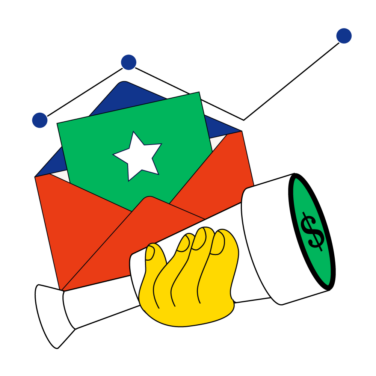AI isn’t the cheat code for scaling revenue. It’s a spotlight.
That’s the central tension Matt Curl, COO at Apollo, unpacked in our recent interview. Apollo, which just passed $150M ARR, is building its sales tech stack around this thesis: AI will either accelerate your success, or make your dysfunction undeniable.
In other words, if your revenue engine is misfiring, AI won’t hide it. It will amplify the problem.
The AI Acceleration Paradox
As Curl put it, AI is an accelerant, not a savior. It doesn’t inherently make you better; it just makes you faster.
What I think AI is really going to do for businesses, especially on the sales tech side, is going to drive massive acceleration,” Curl said. “But acceleration can also mean it accelerates you to failure.
That means companies with clear product-market fit will grow faster, and companies with broken GTM mechanics will fail faster. The blame game becomes harder when so many in your organization can take ownership and work toward the solution using AI tools.
No more blaming marketing for slow execution. You can’t hide behind your clunky CRM or lack of attribution. The product team is no longer a bottleneck.
AI tools level the playing field, and have spurred a meteoric rise in engineering-like skills in sales roles. Your team has the tools to solve the problems, so if it’s your process, messaging, or offer that’s weak, that truth will surface faster than ever.
“There’s nothing inhibiting you from actually scaling your go-to-market efforts,” Curl said. “If revenue’s not coming along with it, that’s going to create interesting tension for early-stage companies.”
The GTM Stack Is Shifting Beneath CROs' Feet
In the early days of generative AI, so many looked at it as a way to write an email, run chatbots, or duct-tape a copilot onto your existing offering. But those are honestly basic use cases. In 2025, we’ve seen the real power of AI to transform go-to-market systems from the ground up. It’s flipped how we think about GTM and the tools we use.
Curl believes we’re heading toward the collapse of legacy CRM architectures. AI changes too fast for rigid, field-based databases. Real-time insights demand flexible, modular data systems, and traditional sales tooling can’t keep up with LLM-native workflows.
“An LLM should be creating new data points constantly,” Curl explained. “In the traditional CRM model, I need to take those data points, convert them into columns, create a bunch of fields in the CRM, and link those fields to another tool. How’s an LLM supposed to do that in real time? Just add and delete fields out of Salesforce constantly?”
This shift favors tools like (Curl’s own) Apollo, Clay, and Snowflake over traditional CRM infrastructure. He thinks the RevTech stack of 2025 will look very different from the Salesforce-led era of the last decade.
And that has big implications for CROs.
If you’re not owning your systems architecture, or at least partnering tightly with someone who is, you’re behind. The CRO role is becoming less about pipeline reviews and more about designing performance engines.
We can already see that newer tech companies aren’t running a traditional sales tech stack,” Curl said. “And I think that’s not in the future, that’s a now thing.
The New Sales Rep Archetype
Beyond tools, AI is transforming the qualities of a top-performing sales rep. It’s not enough to be charismatic, but they also need to be creative, conscientious, and curious.
They experiment with sequences, hooks, and systems. They follow through on every task. They challenge broken workflows and ask better questions.
“The top 5% of reps are always chirping at RevOps,” Curl said. “They’re the ones who thrive with AI.”
But, there’s a catch.
Overreliance on AI can erode critical sales and interpersonal skills. If you’re not doing the work, can you really understand your customers?
“What I’m seeing more of [is the] expectation that deals are going to fall into your lap or meetings,” Curl said. “So I’m seeing more of an expectation of, ‘Do I even have to prospect?’”
AI promises less manual work, but what if that’s what informs the bigger creative work? Perhaps a topic for another article, but it is something leaders should note as they scale AI workflows.
What CROs Should Do Now
Curl left me with a few calls to action. AI adoption isn’t optional. But it also isn’t magic. Leaders need to:
- Lead from the front. Use AI yourself. Show, don’t just tell.
- Treat AI like sales enablement. Train people. Share what works. Share what doesn’t.
- Push for time savings. Apollo’s north star? Save 10 hours per person per week.
- Redefine GTM design. Assume the stack will change. Build for speed, not rigidity.
You’ve got to upskill, you’ve got to experiment," Curl said. "You’ve got to communicate really well, you’ve got to share learnings, you’ve got to share failures, you’ve got to share successes.
Bottom Line
CROs who win in the AI era won’t be the ones who simply bolt on new tools. They’ll be the ones who redesign their GTM system for acceleration and experimentation.
If AI breaks your system, that’s the point. Find the weak points and improve them, or start over and optimize for product-market fit.


